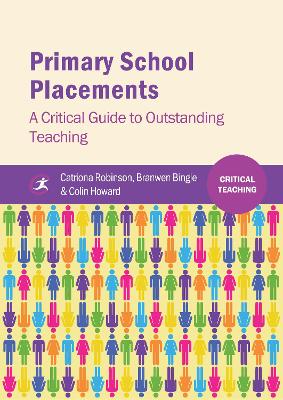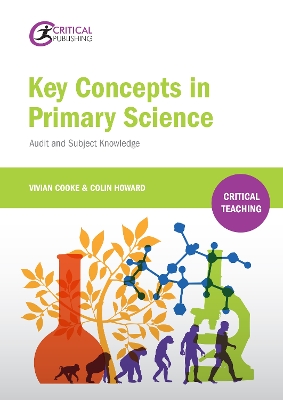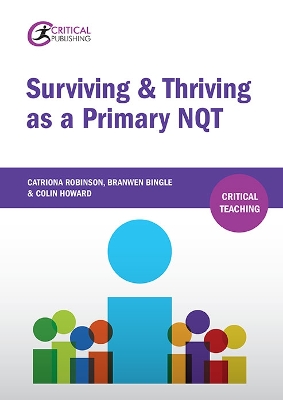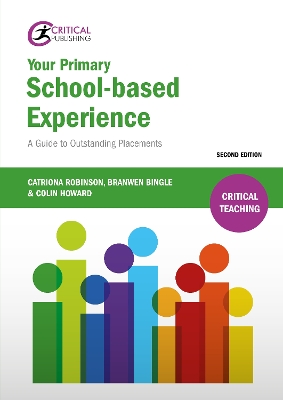Critical Teaching
5 total works
Primary School Placements
by Catriona Robinson, Branwen Bingle, and Colin Howard
This book is an essential companion for all primary trainees in schools, whatever their training route. It provides both practical strategies and opportunities for reflection, so trainees are challenged to critically evaluate their experiences in order to improve their attainment and ultimately succeed in placement. The book covers trainee placements from their onset through to completion, whether on a traditional training route or an alternative such as Teach First. It reflects current educational policy and embraces key national priority areas including behavior, inclusion and the teaching of phonics and early mathematics. Other chapters look at professional partnerships, planning and assessment, employability and, crucially, how to move from good to outstanding teaching. Case studies enliven the text and present a range of perspectives for consideration, while critical questions engage the reader and promote a deeper understanding of the text.
This is essential reading for all primary science trainee and beginning teachers who want to strengthen their science subject knowledge. Each chapter tackles a major theme of the new national curriculum and breaks it down into key concepts. For each concept there is a detailed audit to help readers identify their current levels of knowledge and understanding along with areas for development. This is followed by concise definitions, key terminology, detailed examples and ‘in practice’ ideas to clearly relate theory to classroom practice. Finally, readers are invited to re-check their understanding and assess their level of competence at the end of each section. The text enables teachers to feel secure in their subject knowledge and confident about effectively conveying that information to their pupils through appropriate subject-specific pedagogy.
Surviving and Thriving as a Primary NQT
by Catriona Robinson, Branwen Bingle, and Colin Howard
This book is essential reading for your year as a primary newly qualified teacher (NQT). It provides support through advice, reassurance and practical strategies, and encourages you to critically reflect on your experiences so that you can get the most from your induction period.
Term by term, the book guides you through the transition from trainee teacher to becoming a confident class teacher responsible for the organisation, management and learning of the pupils in your charge. All aspects of life in the classroom are considered, from the practicalities of setting up and resourcing the classroom and creating displays to more strategic level thinking about leading learning and wider school responsibilities. The text tackles key issues such as classroom organisation, homework, writing Individual Education Plans, record keeping and the use of data for tracking pupil progress, and engaging with pupils, parents, colleagues and outside agencies. The final section focuses on the end of induction and what lies beyond for your future career in teaching.
Practical Ideas for Teaching Primary Science
by Vivian Cooke and Colin Howard
This up to date text addresses primary science teaching in light of the new primary National Curriculum and the latest Teachers' Standards. Aimed at primary trainees and teachers, it provides creative, inspiring and practical ideas and approaches for teaching the full range of science topics. Each chapter is aligned to an area of the new National Curriculum and provides key vocabulary, details of common misconceptions and how to address them, teaching strategies and activities, cross-curricular links and health and safety points. Throughout there is a strong focus on science subject knowledge development and how to translate this into practice in the primary classroom. The book also encourages readers to reflect on their own subject knowledge of science and challenges them to critically evaluate their teaching in order to become more effective.
Your Primary School-based Experience
by Catriona Robinson, Branwen Bingle, and Colin Howard
This book is an essential companion for all primary trainee teachers, whatever their training route. It focuses on the school-based experience and provides both practical strategies and opportunities for reflection, so trainees are challenged to critically evaluate their learning in order to improve attainment and ultimately succeed while in their school settings. The book reflects current educational policy and embraces key national priority areas including behaviour, inclusion and the teaching of phonics and early mathematics. Other chapters look at professional partnerships, planning and assessment, employability and, crucially, how to move from good to outstanding teaching. Case studies enliven the text and present a range of perspectives for consideration, while critical questions engage the reader and promote a deeper understanding of the text. This second edition of Primary School Placements has been fully revised throughout and in particular provides an increased focus on evidence-based practice and is referenced to the latest national curriculum.




